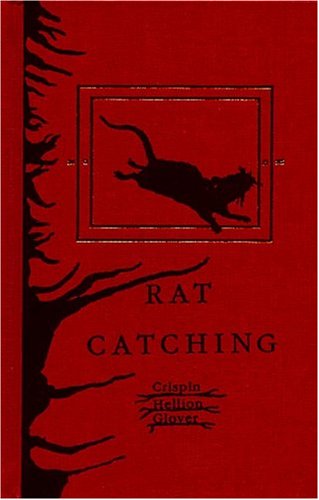 By CRISPIN HELLION GLOVER (Volcanic Eruptions; 1988)
By CRISPIN HELLION GLOVER (Volcanic Eruptions; 1988)
You likely know Crispin “Hellion” Glover best as a crazy actor who’s appeared in quite a few movies over the years (including BACK TO THE FUTURE, CHARLIE’S ANGELS and the WILLARD remake), but he’s also a filmmaker, musician and author. I use that last word sparingly, as you can’t say Glover “wrote” RAT CATCHING, although it’s very much a product of his twisted mind.
It is in fact a book published in 1896 entitled STUDIES IN THE ART OF RAT-CATCHING. It appears to have been a dull-as-dirt educational treatise (on the capture and disposal of plague-carrying rodents) that Glover has twisted into an exercise in surreal distortion.
Glover’s aims are similar to the famed Cut-Up method of William Burroughs, referring to prose that was literally cut up and then pasted back together in seamless new configurations. The difference is that Glover’s methodology is anything but seamless. He’s actually photocopied the original book and blackened or whited out select words, sentences and paragraphs, often filling in the gaps with his own handwritten notations.
It’s impossible to tell how the book might have read in its intended form, but here’s a sample of Glover’s modified text: “Discretion will not rule. I have faced a lion about being bad a young nothing from having rat. Such beasts had for a bad, slow spirit and not profitable.” And another: “We thought that was the end of the big show. But no! once more it rises from its bed like some agonized, dying thing.”
Not exactly easy reading I will admit. It’s probably best to visualize Crispin Glover reciting from the book himself in his inimitable drawl—something I was fortune enough to actually witness at two live readings. I guess that’s a large part of why I like this book. I wouldn’t call it “good,” but it’s definitely a work of singular dementia.
It also features copious photographs, some of them part of the original book and others culled from elsewhere. These include a dissected cow’s head with all its various parts identified, a guy with a cut-open stomach, a skinned lamb, a man’s leprosy afflicted face, and a row of seal pelts (which are followed by an entire page taken up with a single handwritten word: “Almost”).
Like all the great surrealists, Glover has the rare ability to render the inner workings of his subconscious intact on the page. There’s a genuine streak of cockeyed genius at work in RAT CATCHING, even if it often looks like a textbook defiled by a madman—which, truth be told, is precisely what this book is.
